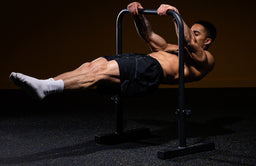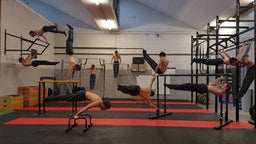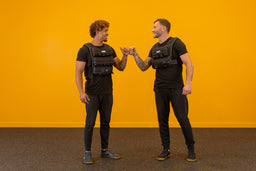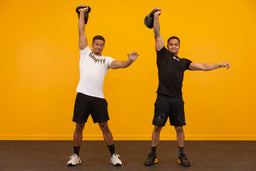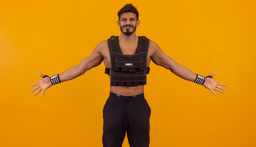
How to choose from different types of weighted vest
How to choose from different types of weighted vest
Compare Gravity Fitness and Force Fitness weighted vests
A weighted vest is a great piece of kit for any active lifestyle. Whether you want to wear it for workouts, for running, for long walks or rucks, it’s the perfect hands-free way to add load.
Before you order a weighted vest online, make sure you understand the different types on offer so you can choose the best sort of weighted vest for your fitness lifestyle.
Are there different types of weighted vests?
Yes, there are lots of different types of weighted vests. The main differences are the size and shape (short or long) and the type of weight used inside the vest.
Gravity Fitness and Force Fitness are sister companies who offer different styles of weighted vests. This is the perfect opportunity to illustrate the two best types of weighted vest you can buy – and why you might choose one over the other.
What kind of weighted vest to avoid
It’s up to you what kind of weighted vest you choose, but we wouldn’t advise getting one that’s filled with sand (or any similar material). These types of weighted vests move around more as you run or workout, and tend to knock against your body. This makes them much less comfortable than vests that use solid metal weight blocks or plates. They may also be less easy to keep clean and dry.
What are the different types of weighted vests?
The two best and most popular types of weighted vests and those that use solid metal weight blocks, and those that use thin weight plates. These two types of weighted vest are great for bodyweight workouts and functional strength training, running, rucking, hiking, and other cardio.
What are the best #1 weighted vests in the UK?
Gravity Fitness and Force Fitness both offer top-quality weighted vests at reasonable prices, backed by guarantees. Whilst the two brands are sister companies and share a passion for encouraging functional movement for every body, Gravity Fitness focuses on calisthenics and bodyweight training and Force Fitness focuses more on outdoor fitness and rucking.
That said, you can use Gravity Fitness and Force Fitness weighted vests for any type of training you want to do. The important thing is that you choose the type of vest that suits you best. Let’s look at the differences.
What’s the difference between Gravity Fitness and Force Fitness weighted vests?
Here’s all the info about Gravity Fitness weighted vests and Force Fitness weighted vests so you can make the best choice for your workouts and training goals.
Gravity Fitness block weighted vests
Remember how we said that weighted vests can different in length? Gravity Fitness vests are the shorter type. These vests hug your torso, and end above your waist and lower back.
Gravity Fitness vests use metal weight blocks, which sit in individual pockets on the outside of the vest (front and back). This means you can add or remove fractional weights to create lots of different weights (even during a workout). Some people like to use the weights as hand weights for warm up or joint mobility exercises.
Gravity Fitness sells these weighted vests in 10kg, 20kg, and 30kg options, and each weighted block weighs 1kg – so you can see how customisable the vest can be!
The vest is made from super durable nylon and can be easily dried and cleaned once you’ve removed the weights. It’s adjustable at the shoulders, and does up around the torso with a sturdy Velcro strap which prevents the vest from moving as you workout.
What are Gravity Fitness weighted vests best for?
Because these vests are shorter in profile, and more customisable in weight, they are best for gym workouts, bodyweight workouts, and functional training sessions. They’re not ideal for anything where your back needs to lie on the floor (V-ups, hollow holds etc).
Force Fitness plate weighted vests
Force Fitness weighted vests are different to Gravity Fitness vests in design, length, and the type of weight they use. These weighted vests have a longer profile and sit over the waist, making them ideal for running, hiking, rucking, walking, and for exercises like pull ups and rig work.
Force Fitness sells plate weighted vests in 7kg, 10kg, 15kg, and 20kg variations. These vests are made from ultra-durable material and based on military style weighted vests. They are fully adjustable with elasticated waist panels to keep the vest snug to your body as you move.
Force Fitness weighted vests use a thin weight plate for the load, which means the vest is slimmer than the block-style vest. This lends itself well to exercises like burpees, press ups, or if you need to put clothing on over the vest in bad weather.
If you want to hike, ruck, or run in a weighted vest, or do workouts that involve running, this style of vest is a great choice.
How to choose the right type of weighted vest
1 Do I need to adjust the weight in my vest regularly? Try Gravity Fitness weighted vests.
2 Will I be running, walking, hiking, or rucking in my vest? Try Force Fitness weighted vests.
3 Will I be doing more strength training workouts? Try Gravity Fitness weighted vests.
4 Do I need a shorter or longer profile weighted vest? Gravity Fitness vests are shorter, Force Fitness vests are longer.
5 Would I prefer a thinner style of weighted vest? Gravity Fitness vests use weight plates, Force Fitness vests use weight blocks.
Check out Gravity Fitness weighted vests and Force Fitness weighted vest and make the perfect choice for your training routine.
